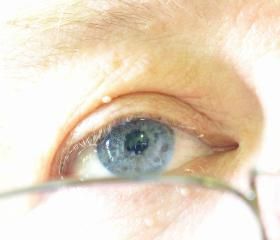
Cycads (pronouces sigh-kads) are an order of plants that flourished during the Mesozoic Era. They have large pinnately compound leaves (fronds) that superficially resemble palms and some ferns. However these plants have a markedly different strategy for reproduction, since they developed before insects had evolved on land. They are dioecious, which means there are seperate male and female plant, and have cones rather than flowers.
 Cycads are very common in the Australian fossil record They are generally very hardy plants and are still growing in many parts of the world. Most widely in South Africa, South America, the Pacific and Australia (as a relict of their Gwondanaland floral heritage). They are widely believed to have been a significant food source for dinosaurs. The seeds of many cycads are poisonous, containg BMMA, a neurotoxin which results from the cycad's roots close relationship with blue green algae that also helps these plants fixed nitrogen into the soil. In the pioneering days of european settlement in Australia, cycads where "harvested" as a rich source of starch, not for eating but as a laundring aid.
Cycads are very common in the Australian fossil record They are generally very hardy plants and are still growing in many parts of the world. Most widely in South Africa, South America, the Pacific and Australia (as a relict of their Gwondanaland floral heritage). They are widely believed to have been a significant food source for dinosaurs. The seeds of many cycads are poisonous, containg BMMA, a neurotoxin which results from the cycad's roots close relationship with blue green algae that also helps these plants fixed nitrogen into the soil. In the pioneering days of european settlement in Australia, cycads where "harvested" as a rich source of starch, not for eating but as a laundring aid. I have several sago palms, cycas revoluta, a japanese variety, which is probably the most popular cycad for cultivation. They where starting to look very unhealthy in the heat, the frond turning yellow and dropping down. Then just as I was worrying, two of the larger plants sent up new fronds. I am not sure if it was the heat, or the smoke hazy that triggered this change, I remember hearing that cycads are a type of plant that flourish after a fire
I have several sago palms, cycas revoluta, a japanese variety, which is probably the most popular cycad for cultivation. They where starting to look very unhealthy in the heat, the frond turning yellow and dropping down. Then just as I was worrying, two of the larger plants sent up new fronds. I am not sure if it was the heat, or the smoke hazy that triggered this change, I remember hearing that cycads are a type of plant that flourish after a fire

![Wollemi Pine [Wollemia nobilius] website](http://photos1.blogger.com/x/blogger2/1930/3564/240/362820/gse_multipart1061.jpg)


No comments:
Post a Comment